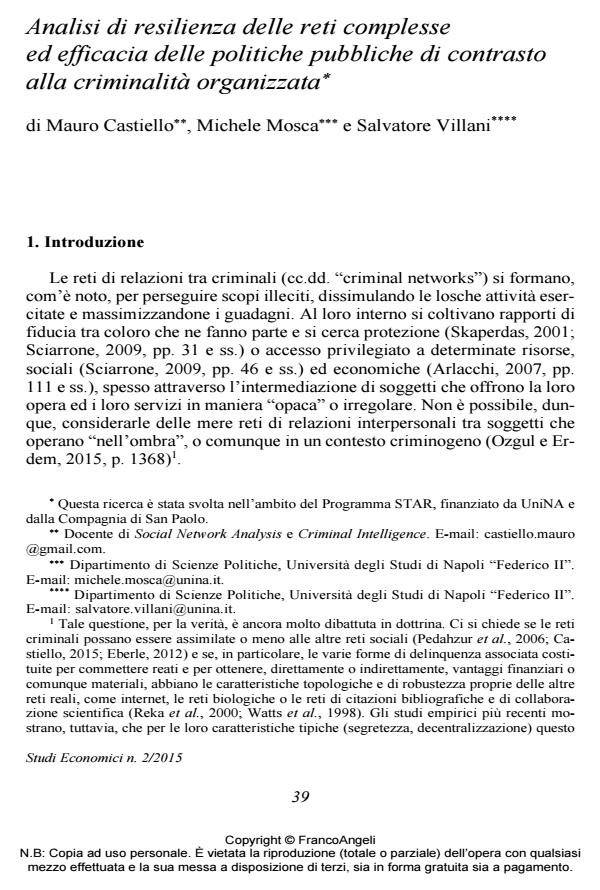Resilience Analysis of Complex Networks and Effectiveness of the Public Policies Aimed to Contrast the Organized Crime
Journal title STUDI ECONOMICI
Author/s Mauro Castiello, Michele Mosca, Salvatore Villani
Publishing Year 2016 Issue 2015/116
Language Italian Pages 35 P. 39-73 File size 553 KB
DOI 10.3280/STE2015-116002
DOI is like a bar code for intellectual property: to have more infomation
click here
Below, you can see the article first page
If you want to buy this article in PDF format, you can do it, following the instructions to buy download credits

FrancoAngeli is member of Publishers International Linking Association, Inc (PILA), a not-for-profit association which run the CrossRef service enabling links to and from online scholarly content.
This paper aims to show in which way the joint use of analysis techniques of the complex networks and the human capital economics might lead to the implementation of new and more effective policies to contrast organized crime. For this purpose, the paper employs an interdisciplinary approach and studies, making use of the techniques and concepts of Social Network Analysis, the structure of existing interpersonal relationships inside two criminal networks engaged respectively in international drug trafficking and in the local providing of social welfare services to the person. The study of the above mentioned networks is based on the analysis of judicial acts issued in the context of two recent police operations successfully completed. The results highlight the remarkable ability of networking and the resilience to law enforcement activities of the examined criminal organizations, suggesting the adoption of new and diversified repressive policies based on the analysis of human capital which these organizations can use for their own purposes.
Keywords: Organized Crime Economics; Illegal Behavior and the Enforcement of Law; Human Capital; Social Networks Analysis; Resilience Analysis of Complex Network Systems.
Jel codes: K14; K42; O15; Z13; Z19
- Applicazioni di Social network analysis per comprendere la resilienza delle cosche mafiose Raffaella Gallo, in SOCIOLOGIA E RICERCA SOCIALE 129/2023 pp.88
DOI: 10.3280/SR2022-129004
Mauro Castiello, Michele Mosca, Salvatore Villani, Analisi di resilienza delle reti complesse ed efficacia delle politiche pubbliche di contrasto alla criminalità organizzata in "STUDI ECONOMICI " 116/2015, pp 39-73, DOI: 10.3280/STE2015-116002